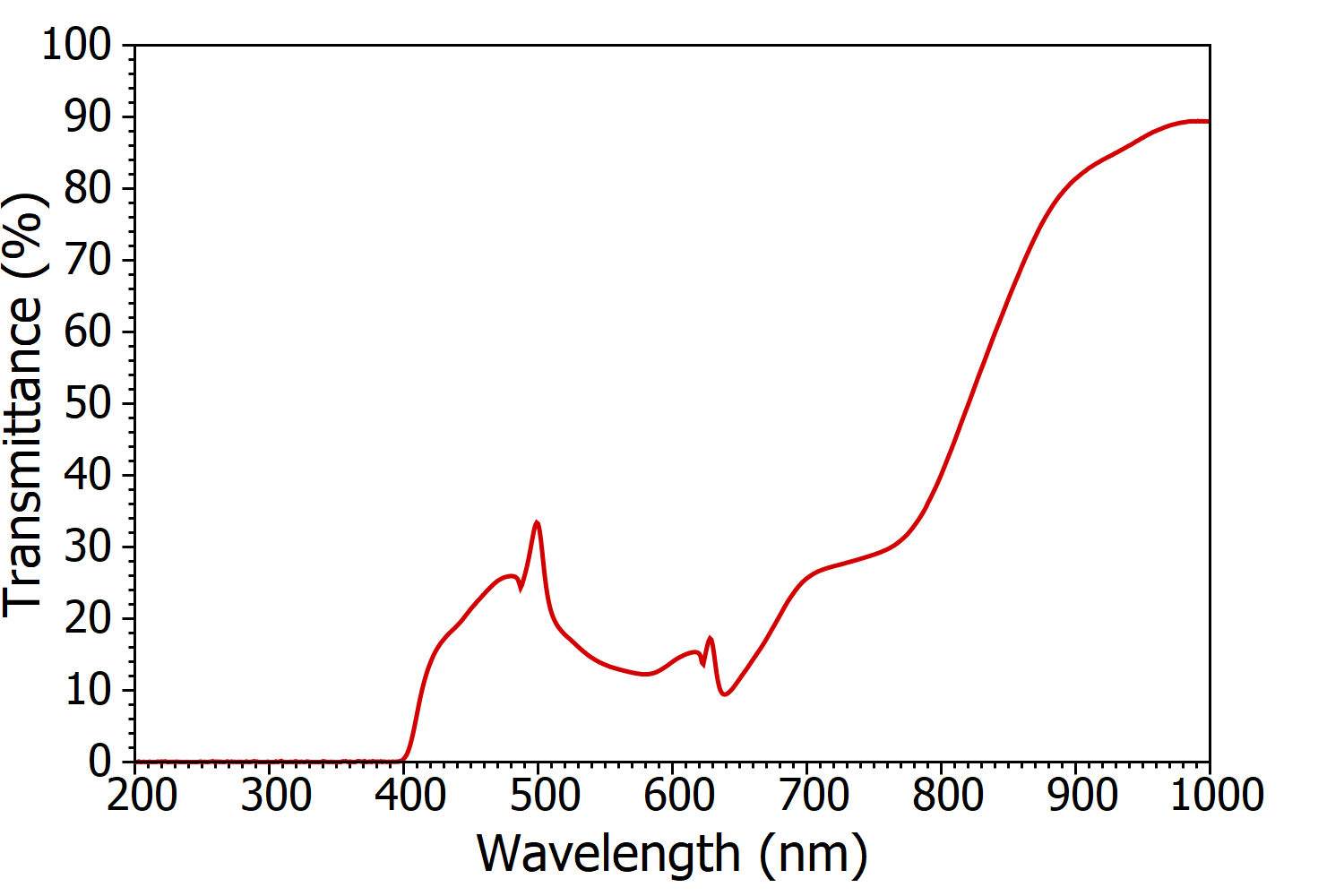UVA UVB Transmittance of Sunglasses Measured Using the DS5 Spectrophotometer
Analysing Sunglasses with the DS5
As the northern hemisphere enters summer the applications team at Edinburgh Instruments looks back on its investigation into the protectivity of sunglasses. This study started after a sunny trip to San Diego California back in 2019 when travel and in—person conferences could occur. One of our team was struggling after forgetting their sunglasses so quickly bought a cheap pair from a street vendor.

Figure 1: Some of our team enjoying conferences and the sights of San Diego in 2019.
This opened a discussion about the quality of these sunglasses. Does the low price really cause them to offer less or no protection from the sun’s rays? Being based in Scotland this is not usually a worry for our team, so we decided to dig into this a bit more.
How can sunglasses be dangerous?
Different countries have different standards required for sunglass manufacturers. In some cases, unbranded, cheaper sunglasses may only block the visible light at let through the damaging UV-light. In fact, tinted lenses which only block the visible light are actually more harmful to the eyes than not wearing any sunglasses at all! This is because the tinted lenses will cause the pupils to dilate which in turn exposes the eyes to increased UV light. So, what actually is UV light? Why is it dangerous – and what should we be looking out for in our sunglasses?
Figure 2 Types of UV Radiation
UV light is a type of electromagnetic radiation which falls in between x-rays and visible light. It is the radiation responsible for sun tans and sun burns alike – too much exposure to UV radiation can be extremely dangerous to living tissue.
UV light is split into three types A, B, and C, Figure 2. UVC is the most energetic and damaging type of UV radiation covering 100-280 nm, however, is it completely absorbed by the ozone layer and does not reach the Earth’s surface.
UVB radiation, 280-315 nm, can reach the Earth’s surface and is wholly absorbed by the cornea and reaches the lens and retina.
UVA radiation, 315-380 nm, also passes through ozone and onto the Earth’s surface which can cause cataracts. Additionally, exposure to UVA has been linked to other eye diseases such as macular degeneration. The purpose of sunglasses is to stop the UVA and UVB radiation reaching the eyes.
What can Edinburgh Instruments do to help?
After researching the dangers of UV radiation to the eyes we thought we would test how effective those cheap sunglasses really were at blocking UVA and UVB light using our DS5 Dual Beam UV-Vis Spectrophotometer by measuring their transmittance.
Figure 3 DS5 Dual Beam UV-Vis Spectrophotometer
The glasses were placed in the sample path so that the incident light was perpendicular to the surface of one of the sunglass lenses, and the blank path was left empty. The variation in % transmittance with wavelength was recorded as shown in Figure 4. The sunglasses transmit between 10-30% of the light in the visible region of the spectrum (380-750 nm). Below 400 nm the sunglasses block lights, with the transmittance dropping to less than 0.1% and therefore offer excellent eye protection.
Figure 4 Transmittance of the Sunglasses
In the UK and the EU sunglasses are classified under the European Standard BS EN ISO 12312-1:2013, which defines 4 categories based on the % transmittance in the UVB, UVA and visible regions of the spectrum (Table 1). Comparing Figure 4 with Table 1 it can be seen that the sunglasses comply with BS EN ISO 12312-1:2013 standard and would be classified as general purpose sunglasses category 2.
Table 1 BS EN ISO 12312-1:2013 Categories for Sunglasses
| Description | Category | UVB Transmittance TUVA(%) 315nm to 380nm | UVA Transmittance TUVA (%) 315 nm to 380 nm |
Visible Transmittance T (%) 380 nm to 780 nm |
|---|---|---|---|---|
| Light tint sunglasses | 0 | TUVB ≤ 0.05T | TUVA ≤ T | T > 80% |
| 1 | TUVB ≤ 0.05T | TUVA ≤ T | 43% < T ≤ 80% | |
| General purpose sunglasses | 2 | TUVB ≤ 1% OR TUVB ≤ 0.05T (whichever is greater) |
TUVA ≤ 0.5T | 18% < T ≤ 43% |
| 3 | TUVB ≤ 1% | TUVA ≤ 0.5T | 8% < T ≤ 18 % | |
| Very dark special purpose sunglasses |
4 | TUVB ≤ 1% | TUVA ≤ 1% OR TUVA ≤ 0.25T (whichever is greater) |
3% < T ≤ 8 % |
Conclusion
Sunglasses need to be tested and regulated to protect our eyes from damaging UV rays. Fortunately for our team member the investigation back at base in Scotland proved these quick buy sunglasses were a safe purchase. Thanks to our DS5 UV-Vis Spectrophotometer we proved the extremely low transmittance through the sunglasses at dangerous UV wavelengths meaning they offered exemplary eye protection.
DS5 Spectrophotometer
The DS5 UV-Vis Spectrophotometer is a high-performance dual-beam instrument that measures absorption and transmission as a function of wavelength and is suitable for many analytical applications where accuracy and precision measurements are key to your results.
Designed and manufactured in the UK, the DS5 provides a modern, user-friendly and accurate UV-Vis spectrophotometer for a wide range of sample types and measurements.
Discover more about the DS5 here.
Stay in Touch
If you have enjoyed this article on transmittance measurements, why not take a moment to sign up to our monthly eNewsletter below for further updates on our latest research, application notes and products.











